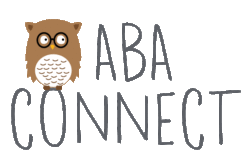Behavioral Contrast
Behavioral contrast occurs in a multiple schedule of reinforcement or punishment and describes what happens when a change in the schedule of one part of the reinforcement or punishment changes a behavior in an opposite direction in the other component of the schedule. An example from Applied Behavior Analysis given is that of a child who eats cookies at the same rate given the presence or absence of his grandmother. One day, the grandmother punishes the child from eating cookies when she is present. This results in reducing the cookie eating when the grandmother is in the kitchen, but increases the cookie eating in the alternate condition of the grandmother being absent (Cooper et.al., 2007, p. 337).
Behavioral contrast is associated with multiple schedules of reinforcement which generally occurs between separate settings.
3 Ways to mitigate behavioral contrast effects:
- Teaching replacement behaviors
- Punishing all occurrences of the target behavior (all settings, all stimulus conditions, etc.)
- Eliminating or minimizing access to reinforcement for the problem behavior




Thank you for a great example and easier to understand than anything else that I had read.
Wonderful site. A lot of helpful information here.
I’m sending it to several friends ans additionally sharing in delicious.
And certainly, thanks for your effort!
Thank You